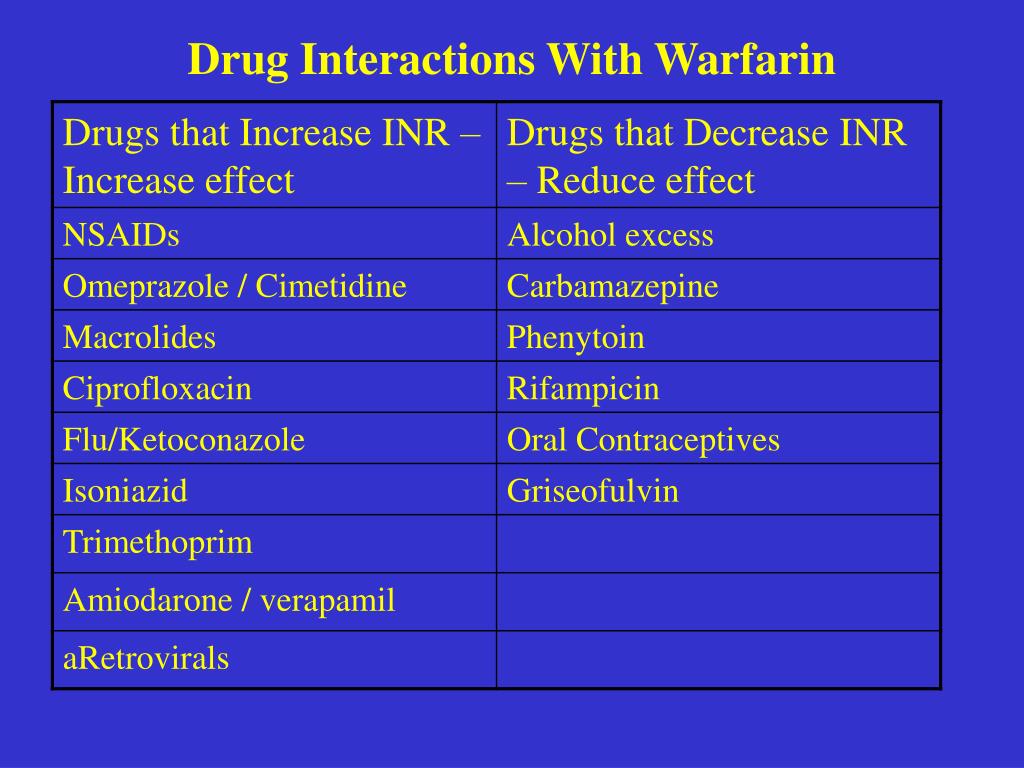
Therefore, dabigatran capsules contain dabigatran-coated pellets with a tartaric acid core. A low gastric pH is required to enhance absorption of dabigatran. Despite the overall lower rates of bleeding at other sites, there was an increase in the rate of gastrointestinal bleeding with the higher dabigatran dose. Rates of intracranial hemorrhage were significantly lower with both doses of dabigatran as compared to warfarin. In addition, the 150-mg dose of dabigatran was found to be superior to warfarin with respect to stroke or systemic embolism, and the 110-mg dose was superior to warfarin with respect to major bleeding. The primary outcome was stroke or systemic embolism.īoth dabigatran doses were found to be noninferior to warfarin with respect to the primary efficacy outcome of stroke or systemic embolism. The median duration of the follow-up period was 2.0 years. In this noninferiority trial, 18,113 patients were randomized.

#ANTIDOTE FOR WARFARIN TRIAL#
The Randomized Evaluation of Long-Term Anticoagulation Therapy (RE-LY) was a randomized trial designed to compare two fixed doses of dabigatran, each administered in a blinded manner, with open-label use of warfarin in patients who had AF and were at increased risk for stroke ( 5). It is administered in a fixed dose without laboratory monitoring. This conversion is carried out by a serum esterase that is independent of cytochrome P-450. But are the novel anticoagulants better than warfarin for patients with AF? We will review the four large randomized trials comparing the efficacy and safety of new oral anticoagulants with warfarin for stroke prevention in patients with AF as well as assess “real world” data and discuss the limitations of the new agents.ĭabigatran etexilate is a prodrug that is rapidly converted to the active direct thrombin inhibitor dabigatran ( 9). Despite this data, uptake has been slow and the majority of patients started on an anticoagulation for AF in the United States are still started on warfarin, largely by primary care physicians. Individually, the NOACs are at least as safe and effective as warfarin for prevention of stroke and systemic embolism in patients with AF ( 5- 8). These new agents offer additional potential advantages over vitamin K antagonists, such as rapid onset and off set of action, absence of an effect of dietary vitamin K intake on their activity, and fewer drug interactions.

The predictable anticoagulant effects of the NOACs enable the administration of fixed doses without the need for routine coagulation monitoring, thereby simplifying treatment. Several novel oral anticoagulants (NOACs) have been developed that dose-dependently inhibit thrombin or activated factor X (factor Xa) ( 5- 8). Thus, a need arose for new anticoagulant agents that are effective, safe, and convenient to use. These limitations result in poor patient compliance and likely contribute to the underuse of vitamin K antagonists for stroke prevention ( 3, 4). Although these drugs are highly effective in the prevention of thromboembolism, their use is limited by the need for regular monitoring and the possibility of food and drug interactions.

Until 2009, warfarin and other vitamin K antagonists were the only class of oral anticoagulants available. It is associated with significant morbidity and mortality related to stroke due to thromboembolism ( 2). Accepted for publication Dec 19, 2014.Ītrial fibrillation (AF) is the most common cardiac arrhythmia, with a lifetime risk exceeding 20% by 80 years of age ( 1). Keywords: Anticoagulants atrial fibrillation (AF) hemorrhage stroke warfarin Interviews with Outstanding Guest Editors.Policy of Dealing with Allegations of Research Misconduct.Policy of Screening for Plagiarism Process.


 0 kommentar(er)
0 kommentar(er)
